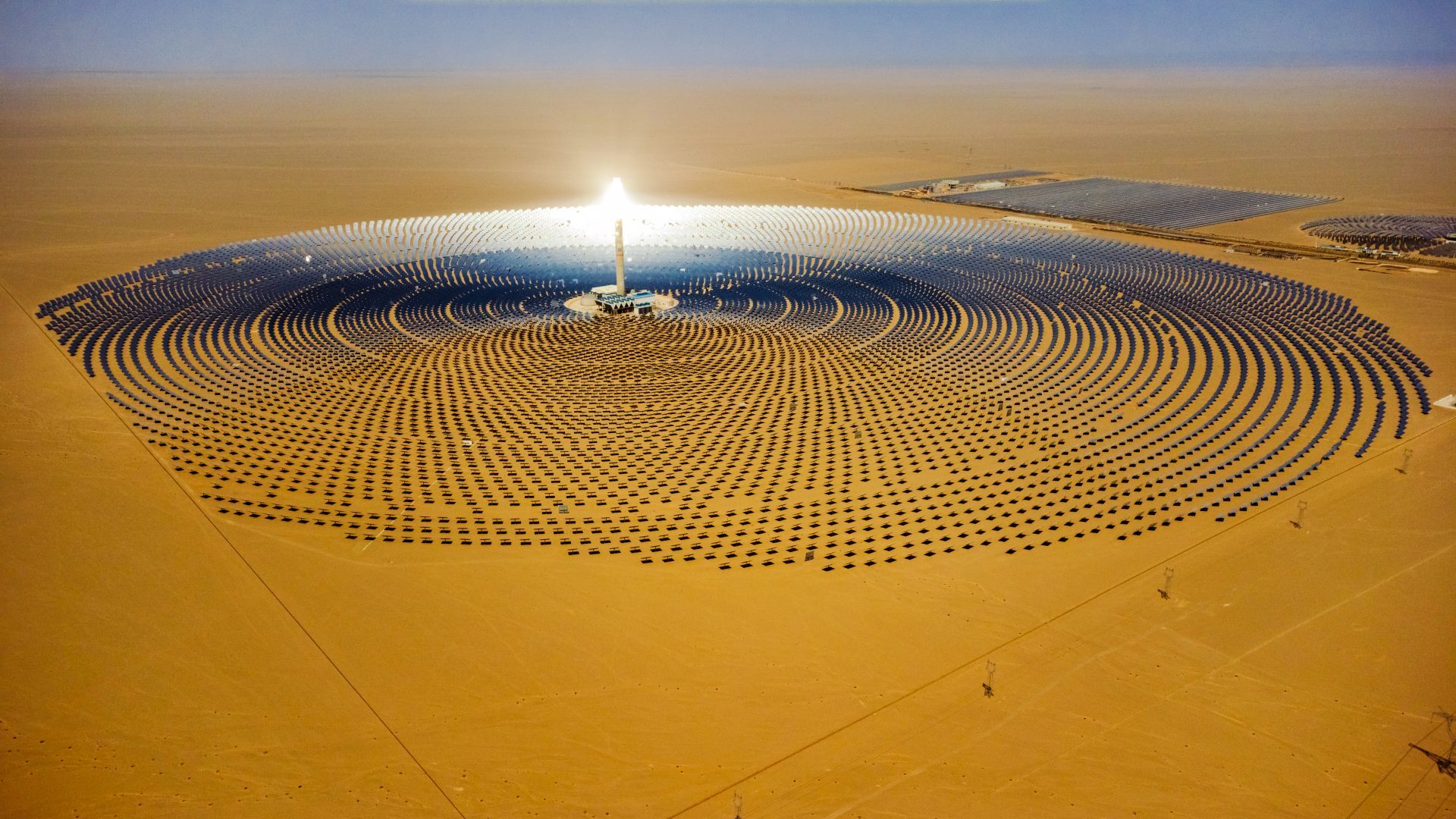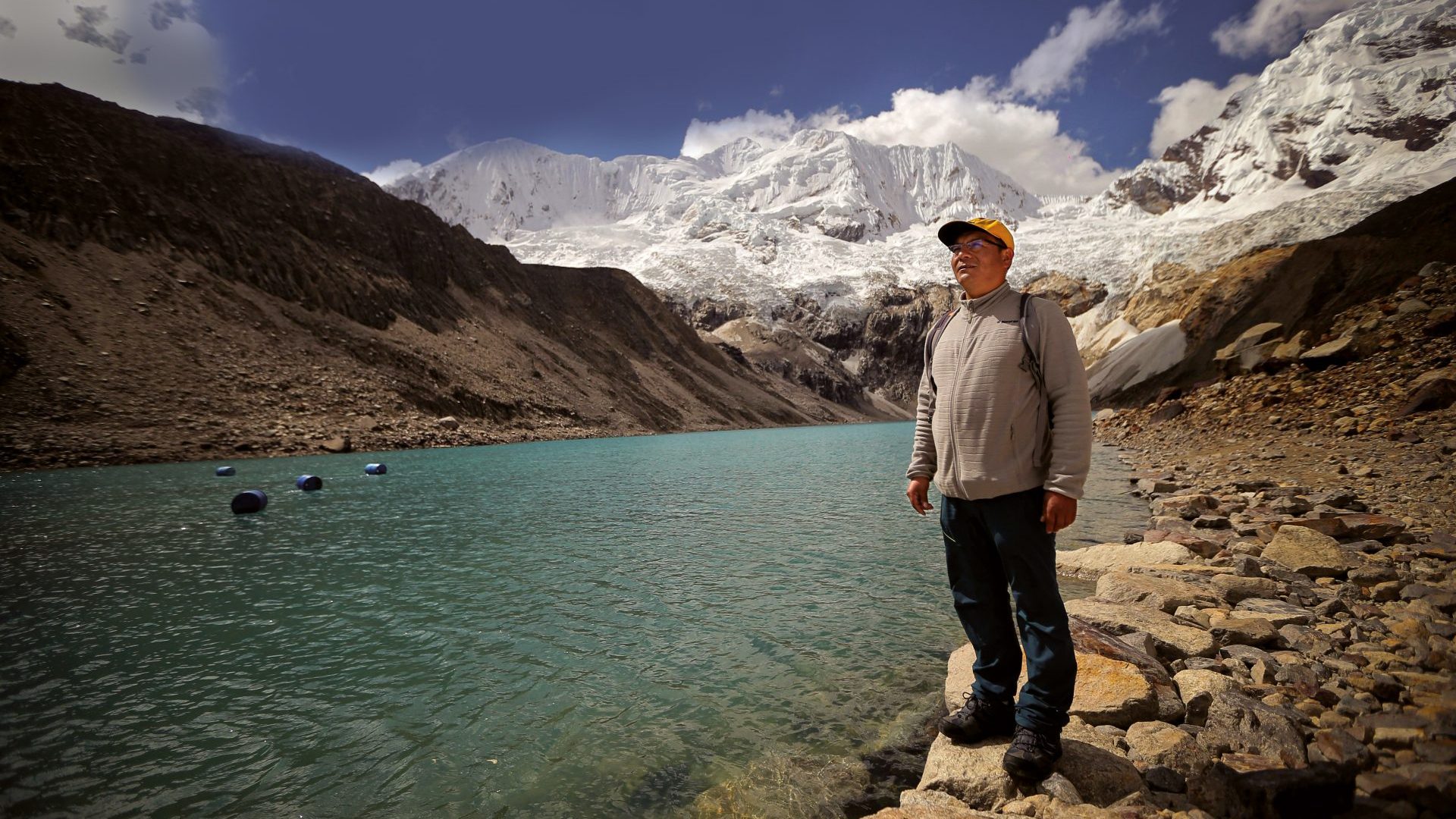Parched birds falling from merciless skies; glaciers melting and creating thousands of lakes; more than a billion people at risk of heat-related illnesses; scores of heatstroke deaths; endless power cuts. It’s the stuff of nightmares. Or, reality for millions in India and Pakistan these past weeks.
The heatwave suffocating south Asia is a terrifying reminder of a dystopian future that many believe is now too close for comfort. Scientists have blamed the scorching conditions in India and Pakistan on climate change. So what do we do?
World leaders have committed to cutting carbon dioxide emissions, but action lags pledges, and we are not going fast enough to limit the rise in global temperatures to below 2C, never mind to keep it under 1.5C, as agreed in the 2015 Paris climate agreement. In fact, scientists recently warned that there is a 50:50 chance of global average temperatures rising to more than 1.5C above pre-industrial levels within the next five years.
And for those reading this article and thinking this is all happening “over there”, remember last summer: wildfires raging from Athens in Greece to Marmaris in Turkey; temperatures hitting 48.8C on the island of Sicily; floods killing hundreds of people in Germany.
As the question of how to rein in climate change becomes more urgent, the answers become more radical.
For many researchers, the most controversial form of solar geoengineering – stratospheric aerosol injection (SAI), or dimming the sun by creating a barrier in the stratosphere using aerosol particles – is a do-or-die roll of the dice that would cool the planet and, crucially, buy more time to cut emissions.
Everyone agrees that SAI is risky and that we don’t know what the consequences of such climate manipulation would be. What divides people is the question of whether or not we should even study the idea.
Advocates say the risk is worth it. Opponents counter that it will set the world on a slippery slope to the unknown. The argument itself is blocking serious attempts to find out the answer and the clock is ticking.
“My biggest fear is that we slither into solar geoengineering unwittingly, without having done the hard work, and that could play out in various different ways,” said Gernot Wagner, a climate economist at Columbia Business School and author of Geoengineering: the Gamble. “One scenario might be basically to not do the research … and then somebody somewhere is going to pull the trigger… Say we have yet another heat storm above a subcontinent of a billion people – like we literally had these past weeks with a tenth of humanity … What else would it take? Would it take two-tenths of humanity? Does it have to affect India and China?”
Geoengineering, or the use of new technologies and strategies to intentionally manipulate the planet’s environment, is not just about dimming the sun. Within this broad category, there are two main types of interventions – removing CO2 from the air and solar geoengineering, reflecting sunlight away from the earth.
Carbon dioxide removal is seen as the more reasonable option – even if the various techniques used today are generally small-scale, energy-intensive and expensive. Solar geoengineering is regarded as more speculative. However, deflecting the sun’s rays doesn’t have to be high-tech – in Peru, scientists painted a mountain white to reflect more heat and protect glaciers, and buildings have been covered with special paint for the same reason. Other ideas being considered include installing mirrors in space, growing crops genetically modified to be brighter, spraying clouds with sea salt to make them brighter and putting mirrors in deserts.
But the idea that has aroused the most controversy is SAI. On the face of it, it’s relatively straightforward – a fleet of specially adapted planes or rockets would spray compounds like sulphur dioxide or calcium carbonate into the air to reflect the sun’s rays back into space. It could be a quick fix: temperatures could come down within months and years, but the problem is that although some research is being done, it is fragmented and efforts to carry out real-world experiments can face intense opposition.
It’s not so much that we have to test the theory. We already know the underlying premise is sound: when Mount Pinatubo in the Philippines erupted in 1991, it expelled millions of tons of sulphur dioxide into the stratosphere, cooling global temperatures by around 0.5C for almost two years.
It’s the longer-term side-effects that are the great unknown.
The idea of injecting particles into the stratosphere edged into the mainstream when Nobel Prize-winning atmospheric chemist Paul Crutzen wrote a landmark essay on SAI in 2006 that broke the taboo many felt existed around the subject.
But although Crutzen wrote that the idea should not be considered lightly, he faced a backlash from colleagues who worried the idea might distract from efforts to cut emissions.
It is this concept of moral hazard – the idea that even the potential of a quick-fix solution will hamper efforts to cut emissions – that still concerns opponents of solar geoengineering.
“The looming possibility of future solar geoengineering could become a powerful argument for energy companies and oil-dependent countries to further delay decarbonisation policies,” wrote a coalition of around 60 academics in an open letter that appeared in the WIREs (Wiley Interdisciplinary Reviews) Climate Change online publication in January.
The scientists called for a ban on outdoor experiments, implementation, patents, public funding and support from international institutions like the United Nations. They argued that artificial cooling of the planet could affect regional weather patterns, agriculture and supplies of food and water, and would be impossible to govern fairly and effectively.
“Solar geoengineering is not necessary. Neither is it desirable, ethical, or politically governable in the current context. With the normalisation of solar geoengineering research moving on with rapid speed, a strong political message to block these technologies is needed. And this message must come soon,” the letter concluded.
Some scientists have also suggested that solar geoengineering could reduce the effectiveness of solar panels, which offer an alternative to some of our dirtiest energy sources.
Solar power now accounts for around 3% of the world’s energy supply and there are two main types: photovoltaic, which uses solar panels, and concentrated solar power, which uses mirrors to concentrate solar energy from a large area, creating intense heat for industrial processes or generating electricity – as at the molten-salt concentrated solar plant in Dunhuang in China, the leading country for solar power.
Despite all these fears, Wagner says the idea that you can quash all future research is just wishful thinking. “Yes, solar geoengineering is a scary technology …It’s not something to joke about or take lightly, but none of that means we shouldn’t be doing the research,” he says.
“It’s about weighing the risks of unmitigated climate change – the world we are heading towards – against the risks of a world that also considers solar geoengineering.”
Opponents argue that if the SAI interventions went ahead but were stopped suddenly for any reason, the earth could face termination shock – a sudden, devastating temperature rise. A 2018 Yale study, published in Nature Ecology & Evolution, said global temperatures could soar three times faster than climate change in such a scenario.
It’s a scary prospect, but is the alternative – that we don’t manage to slow global warming until it’s too late – any less scary?
Dr Rob Bellamy, presidential fellow in climate and society in the geography department at the University of Manchester, says that banning or defunding research risks pushing it underground and increasing the possibility that a rogue leader may one day rush to use an untested technology – the very scenario that so frightens critics.
“One of the key governance principles behind doing something like this is to treat it like a public good. It needs public investment, transparency, all those things that are much easier to get when it comes through public funding. If it’s done privately, you start to lose those things and it becomes, ironically, more likely to be the sort of thing that people who want to ban it are concerned about,” he said.
Bellamy also notes that research doesn’t equal approval.
“I’ve been very critical of the slippery slope argument. It rests on two key premises: first of all that by researching something you are inevitably going to do it, and secondly, if you do do it, the impacts will be bad,” he says. “Through research we may well find ways of counteracting potential problems, changing the trajectory of the innovation by taking into account these concerns that people have. So it’s definitely not a foregone conclusion.”
Bellamy concedes that carbon capture and storage technologies – the friendlier face of geoengineering – are the better bet right now. That doesn’t, however, mean the world shouldn’t have “a kind of emergency backstop” in case temperatures spiral higher.
“At the end of the day, I think it is very, very unlikely that we would do this, even with the research, but I think we need to do the research just in case,” he said.
In its Mitigation of Climate Change report, released in April, the Intergovernmental Panel on Climate Change, or IPCC, said solar geoengineering is at best a supplement to achieving sustained net-zero emissions. It also noted that it could affect the spread of infectious diseases, alter food security, deplete the ozone layer, and even threaten international cooperation and peace.
On removing CO2 from the atmosphere, the IPCC concluded that this would now be “unavoidable”, given how hard it would be to cut emissions in sectors such as aviation, agriculture and some industrial processes.
Some companies are already involved in direct air capture, or sucking CO2 out of the atmosphere. In Iceland, for example, Swiss-based Climeworks opened the world’s largest direct-air-capture plant last year to extract 4,000 tonnes of CO2 annually. The captured carbon is then pumped underground, where it is turned into stone.
Bellamy, who is a member of a nationwide scientific hub looking at CO2 removal in the UK, says these techniques have to be considered, even if they do face the same “moral hazard” argument as solar geoengineering.
Nonetheless, carbon capture techniques do not seem to inspire the same level of visceral fear among members of the scientific community.
But what of the public? Their consent is also needed for experiments and that can be an issue when it comes to researching ways to dim the sun.
Last year, the world’s leading solar geoengineering research unit at Harvard University had to cancel an outdoor test of the grandly named Stratospheric Controlled Perturbation Experiment, or SCoPEx, in Sweden because of opposition from leaders of the indigenous Saami people, who live in the area. The plan was to fly a balloon high into the sky, but without releasing any particles this time.
Wagner, who was the founding executive director of Harvard’s Solar Geoengineering Research Programme, says the experiment would have had no direct environmental impact.
Even if they had released sulphur dioxide, he says the direct impact would have been less than that caused by a commercial airliner during one minute of flight. “Which is another way of saying that none of this was ever about the environmental impact. It’s about the symbolism.”
In a clear sign of the urgency and complexity of the issue, a new body – the Global Commission on Governing Risks from Climate Overshoot – has been formed to explore how to cut risks to people and nature if the world breaches the 1.5C limit.
Led by the former director-general of the World Trade Organization and president of the Paris Peace Forum, Pascal Lamy, the commission is composed of 16 former government leaders who will study various options for tackling climate change, including CO2 removal and solar geoengineering. They will then present an integrated strategy on how these technologies could be governed before the UN Climate Change Summit in 2023.
“All of us would prefer not to confront the consequences of insufficient action,” Lamy said as the commission was launched. “Importantly, we will continue to work towards achieving the world’s climate goals as best we can. But we also have an overriding responsibility to be prepared, in case we do not succeed.”
The bleak reality is that the body’s creation is a clear indication that the world is ever more likely to miss the 1.5C target.
“Countries’ pledges to date put us on track for 2.7C warming by the end of this century. It is high time to brace ourselves for this worst eventuality,” said Hina Rabbani Khar, minister of state for foreign affairs of Pakistan and a member of the commission.
The new body will try to determine what information is needed to take rigorous and science-based decisions on whether to deploy such technologies, said Adrien Abécassis, executive director of policy at the Paris Peace Forum, which will host the commission.
“They will not be looking for some kind of Plan B, or emergency solution, or emergency brake. That’s not the point. The question is: have we really considered all the possible combinations of options? It’s a kind of moral duty to be sure we do all we can to minimise the risks,” Abécassis said.
The commission stresses that harmful emissions still need to be cut. Wagner agrees and believes tech must be part of the solution.
“It’s like teaching your six-year-old to turn off the water while she brushes her teeth – because it’s the right thing to do. Acting immorally is bad. Do the right thing, but believing that behavioural change alone is going to fix (climate change)? No. How do you decarbonise your apartment? With new technology, with good insulation, triple-glazed windows, heat pump, solar pump, battery storage, the induction stove – all these elements are fantastic new tech for behavioural change.”
In the end, Bellamy says, technology will be key. “The distinction between technological, social or natural solutions is pretty arbitrary. Anything we do involves a form of technology, even if it’s a standardised procedure… Technology will be at the core of tackling climate change.




